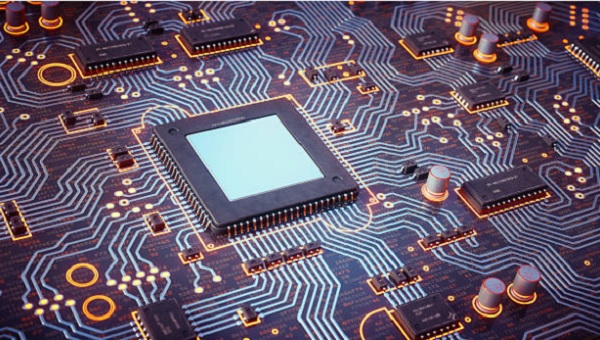Dec 31, 2025
Dec 31, 2025
A side-effect of Covid-19 pandemic is the amplification of semiconductor shortage across the globe which disabled car manufacturers from installing the electronics that control entertainment systems, safety features and driving aids and even made some carmakers to cut their assembly-line shifts, some to temporarily shut their factories
Its adverse impact is not limited to car industry alone, for chips are the backbone of pretty much everything around us: be it PCs/laptops, smart speakers, tablets, gaming consoles, internet modems and Wi-Fi routers, smartphones, TVs, ACs, refrigerators, washing machines, rice cookers, water purifiers, ATM machines, 3/4/5G networks—they all relied on semiconductors to do whatever they are supposed to do.

And, the pandemic-driven locked-down people have simply caused a spike in the demand for semiconductors that powered the data centres and such gadgets which enabled them to shop online, log into meetings remotely, while away their newfound time at home with video-streaming and video-gaming, etc., flooding their manufacturers with orders.
Interestingly, all this, according to industry Pundits, is offering an unprecedented opportunity for India to make an entry into semiconductor industry. In fact, right from the day the US-China trade war started in 2017 and a shift in supply chains began as countries started looking for more stable and reliable suppliers, there emerged a scope for India to login into that shift.
Of course, India has been trying to woo big chip makers of the globe into the country for a number of years but nothing has materialized. For, chip manufacturing, calling for huge investment, made the multinationals that were highly cautious of such investments to first look for availability of necessary infrastructure, and a favorable ecosystem of equipment players and materials plus very consistent policies of the government for chip manufacturing to take off smoothly.
Reports indicate that in 2007, Intel showed interest in setting up a fab plant in India but finally, lured by ‘attractive incentives’ moved to China and Vietnam. Since then, attempts are being made by companies to establish fab plants but nothing concretized. In 2020 government floated EoI inviting applications to set up fab plants but the response was lukewarm. One of the reasons cited for such poor response is: the need for a reliable and stable electricity supply which is the most crucial component of semiconductor manufacturing besides abundant water supply, transport infrastructure and experienced staff, which the nation even today struggles to ensure.
In the light of these experiences, what the industry analysts are looking for is: a vision document from the government clearly articulating its strategy—a strategy that is drafted in consultation with leaders in global semiconductor industry along with native industrialists—to build a broader semiconductor ecosystem.
To be successful at least this time round, it is suggested that the government, instead of dreaming of turning India into a manufacturer of full-fledged fabs that involves high-end, high-cost lithographic process that builds complex patterns of transistors, layer by layer on the silicon wafer, should encourage entries into such segments of semiconductor manufacturing that encounter relatively less entry-barriers such as manufacturing raw wafers, chip packaging and testing, etc., that costs much less while generating more employment.
Another segment that the India Electronics & Semiconductor Association suggested to the government is manufacturing specialty fabs, which play a key role in sectors such as power, electric vehicles and medical devices, for these fields are still new and hence we may not be left far behind the leading players and can catch up with the market expectations soon.
That aside, it would be relatively easy to rope in established players in these segments such as ASE to consider establishing themselves in India vis-à-vis full-fledged manufacturers of fabs like TSMC, a global leader that boasts a client list which includes Apple, Qualcomm, Nvidia Corp, etc. Secondly, Taiwan is today encouraging its chip manufacturers, including TSMC, to remain within the country offering attractive incentives to protect their cutting-edge technology against foreign meddling. Even the US has become very sensitive about transferring latest semiconductor manufacturing technology to other countries.
Intriguingly, semiconductors have in the recent past acquired strategic importance, which made countries more sensitive to transfer of technology. Many countries are today trying to be self-sufficient in areas such as defense. In the light of these hard realities, it would be prudent for India, to first make an entry into semiconductor industry through low-end segments of chip making such as ATMP—of course, leveraging on the interest recently expressed by domestic companies like Tatas, Vedanta to enter this space—and once proved successful, graduate into manufacturing semiconductor fabs.
Here, it is also important to keep in mind that chips have relatively short life and become obsolete when a new and faster applications are developed. Thus, the industry is very cyclical. According industry analysts, the pork cycle is just turning once again—TSMC is planning to invest $ 30 bn on a new capacity this very year. Samsung and Intel have also pencilled $28 bn and 20 bn respectively as their investment on new capacity creation. Looking to the current scenario of shortage, even two-tier chip-makers are reported to be ramping up their investments in new capacities. Therefore, we need to draft our entry plans more prudently.
Nevertheless, as every nation is today lining up resources to strengthen its semiconductor industry, it truly is now or never for India to carve a space for itself in the global semiconductor market.
09-Oct-2021
More by : Gollamudi Radha Krishna Murty